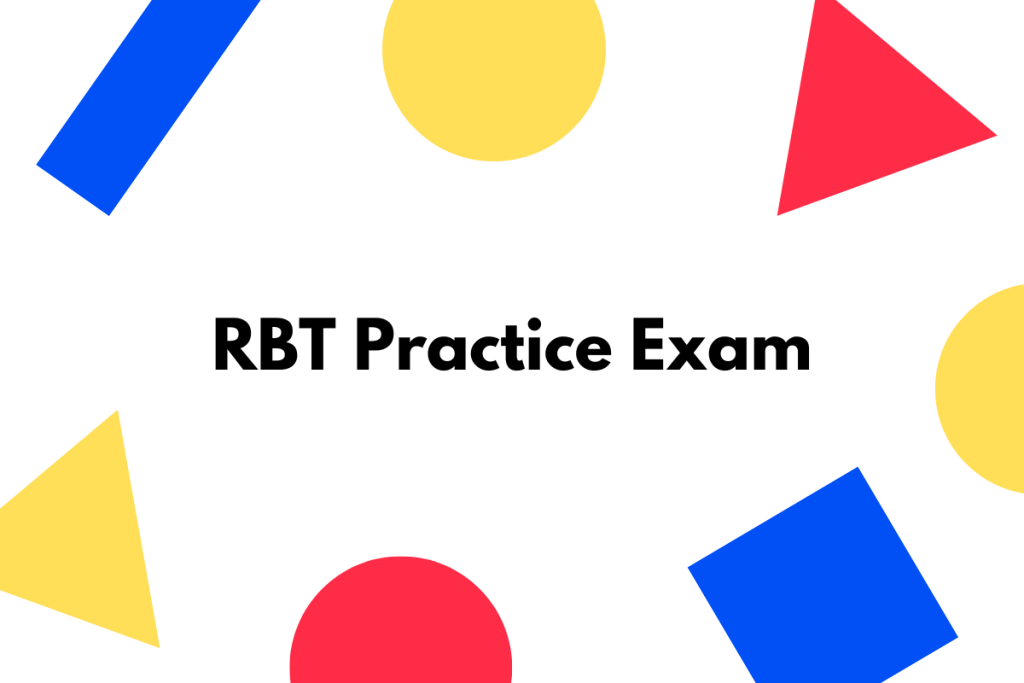
Are you on the path to becoming a Registered Behavior Technician (RBT)? Achieving RBT certification is a pivotal step in your career, marking your dedication and expertise in applied behavior analysis (ABA). A key milestone in this journey is passing the RBT exam—a comprehensive assessment that validates your understanding and application of critical behavior analytic skills.
The RBT exam consists of 85 questions, 75 of which are scored and 10 ungraded. It is designed to test your knowledge across six essential content areas: Measurement, Assessment, Skill Acquisition, Behavior Reduction, Documentation and Reporting, and Professional Conduct and Scope of Practice. Given the exam’s broad scope, it’s crucial to approach your preparation with the right tools and strategies.
This is where RBT practice exams come into play, offering a mirror to the real test and enabling you to gauge your readiness effectively.
Last Update: June 24, 2024
Start Free RBT Practice Exam
How to Use the RBT Practice Exam Effectively
Mastering the RBT practice exam is more than just a rehearsal—it’s a strategic tool that, when used correctly, can significantly enhance your readiness for the actual RBT exam. To leverage this resource most effectively, consider the following guidelines:
Integrating Practice Exams into Study Plans
- Start Early: Incorporate practice exams early in your study plan to identify your baseline knowledge and understand the exam’s format.
- Structured Approach: Break down your study sessions to focus on one of the six content areas at a time. After studying a section, take the relevant portion of a practice exam to assess your understanding.
- Balance Study and Practice: Alternate between focused study sessions and practice exams. This approach helps reinforce learning through application and identifies areas needing further review.
Analyzing Practice Exam Results
- Identify Weaknesses and Strengths: Carefully review your practice exam results to pinpoint areas where you excel and areas that require more attention. This targeted approach ensures efficient use of study time.
- Understand Why Answers are Correct or Incorrect: Don’t just focus on the score. Review explanations for both correct and incorrect answers to deepen your understanding of the concepts.
- Track Progress Over Time: Use the results of subsequent practice exams to track your improvement in different content areas. This tracking can motivate you and highlight the effectiveness of your study strategies.
Frequency and Timing of Practice Exam Sessions
- Regular Practice: Schedule regular practice exam sessions to maintain a steady rhythm of preparation and assessment. Initially, you might take a full practice exam once every two weeks, gradually increasing frequency as the actual exam date approaches.
- Last-Minute Reviews: In the final week before the exam, consider taking one last practice exam to confirm your readiness. Use this as an opportunity for a final review, but avoid cramming new information to prevent overload.
FAQs about the RBT Practice Exam
How many attempts am I allowed on the practice exam?
We understand the importance of repeated practice to solidify your understanding and test-taking skills. Therefore, we offer unlimited attempts for each practice exam.
This allows you to retake the tests as often as needed to feel confident and prepared for the actual RBT exam.
How similar is the practice exam to the actual RBT exam?
Our practice exams are meticulously designed to mirror the actual RBT exam in terms of format, question style, and content coverage.
While the specific questions on the actual exam will differ, our practice tests provide a realistic simulation of the exam experience, including the types of questions asked and the level of difficulty.
This ensures that you are testing your knowledge and familiarizing yourself with the exam format, reducing surprises on test day.
What should I do if I consistently score low on practice exams?
Low scores on practice exams indicate areas where further review and understanding are needed. It’s important to use these results as a guide to focus your study efforts more effectively.
We recommend reviewing the content areas where you scored lowest, using the detailed feedback provided to address gaps in your understanding.
Consider seeking additional resources or guidance on challenging topics, such as tutoring or study groups.

